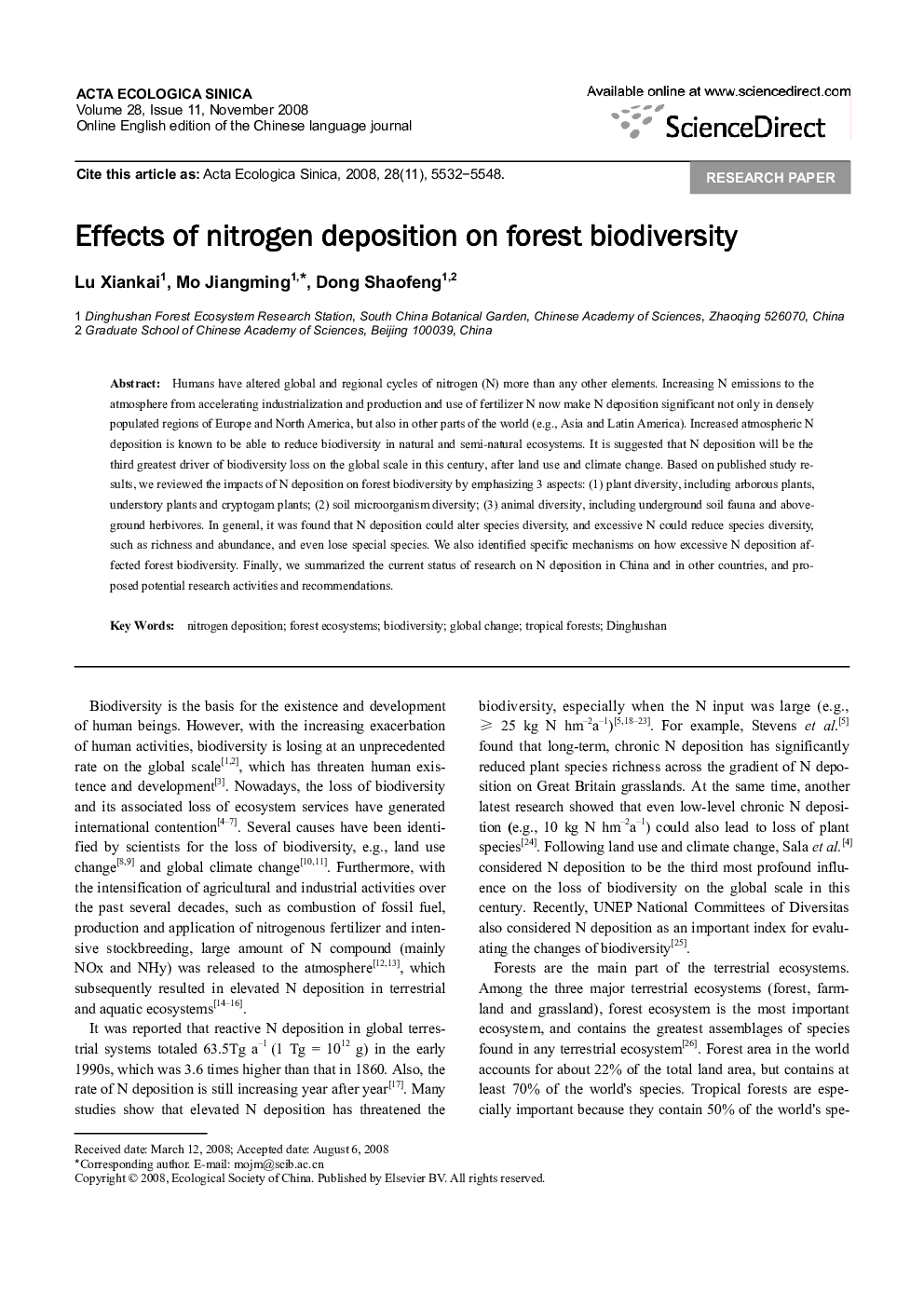| Article ID | Journal | Published Year | Pages | File Type |
|---|---|---|---|---|
| 4380294 | Acta Ecologica Sinica | 2008 | 17 Pages |
Humans have altered global and regional cycles of nitrogen (N) more than any other elements. Increasing N emissions to the atmosphere from accelerating industrialization and production and use of fertilizer N now make N deposition significant not only in densely populated regions of Europe and North America, but also in other parts of the world (e.g., Asia and Latin America). Increased atmospheric N deposition is known to be able to reduce biodiversity in natural and semi-natural ecosystems. It is suggested that N deposition will be the third greatest driver of biodiversity loss on the global scale in this century, after land use and climate change. Based on published study results, we reviewed the impacts of N deposition on forest biodiversity by emphasizing 3 aspects: (1) plant diversity, including arborous plants, understory plants and cryptogam plants; (2) soil microorganism diversity; (3) animal diversity, including underground soil fauna and aboveground herbivores. In general, it was found that N deposition could alter species diversity, and excessive N could reduce species diversity, such as richness and abundance, and even lose special species. We also identified specific mechanisms on how excessive N deposition affected forest biodiversity. Finally, we summarized the current status of research on N deposition in China and in other countries, and proposed potential research activities and recommendations.
